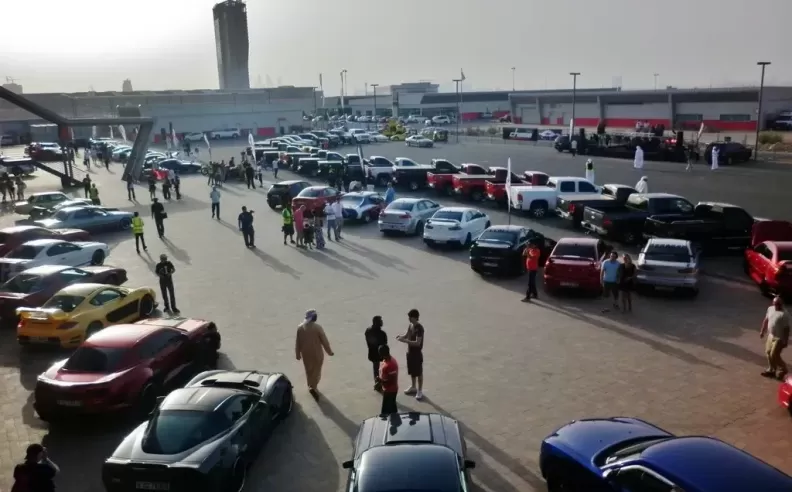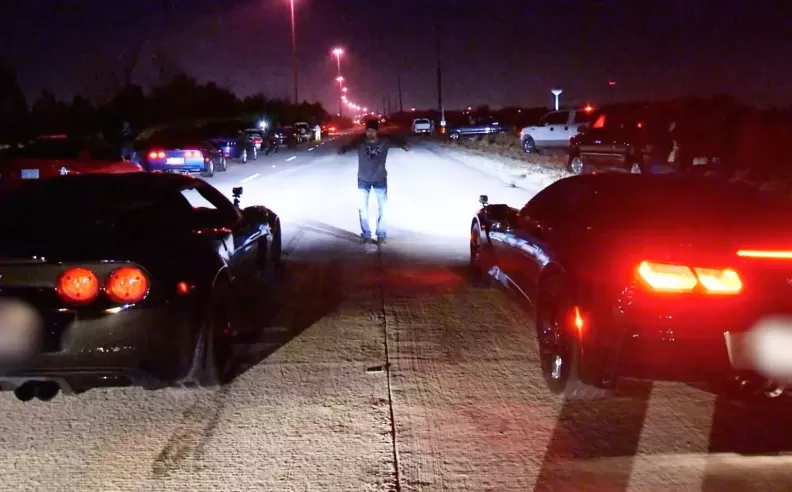
The United Arab Emirates (UAE) is renowned for its stunning architecture, luxury lifestyle, and booming economy. However, beneath the glitz and glamour, there's a growing issue that threatens the safety and tranquility of its streets: street racing. While adrenaline junkies may find the allure of illegal street races tempting, this dangerous and illegal activity poses significant risks to both participants and innocent bystanders. In this article, we will explore the violations of street racing in the UAE and the measures being taken to combat this perilous phenomenon.

Street racing has become a prevalent issue across the UAE, especially in cities like Dubai and Abu Dhabi. What initially started as an underground subculture has now grown into a significant problem for law enforcement and safety authorities. The allure of high-speed thrills, expensive sports cars, and the desire for bragging rights has enticed many young drivers into the world of illegal street racing.
Violations Associated with Street Racing
Reckless Driving: One of the most apparent violations associated with street racing is reckless driving. Participants often engage in dangerous maneuvers, including excessive speeding, swerving through traffic, and running red lights, endangering themselves and others on the road.
Noise Pollution: The noise generated by modified and high-performance vehicles during street races is a major concern for residents in affected areas. The constant revving of engines and screeching of tires disrupts the peace and quiet of neighborhoods.
Property Damage: Street racing often leads to property damage, with collisions and accidents causing harm to public and private property. Innocent bystanders can also fall victim to these incidents, resulting in injury or worse.
Public Nuisance: Street racing disrupts the daily lives of residents, particularly at night when these races typically occur. The noise, danger, and road closures associated with street racing create a public nuisance and an atmosphere of fear in affected neighborhoods.
Traffic Violations: Participants in street races frequently disregard traffic laws, such as speeding, running red lights, and performing dangerous overtaking maneuvers. These violations contribute to a chaotic and unsafe road environment.

The UAE government has recognized the gravity of the street racing problem and has implemented stringent measures to combat it. These measures include:
Increased Penalties: The UAE authorities have raised fines and penalties for street racing violations to act as a deterrent. Offenders can face heavy fines, impoundment of their vehicles, and even imprisonment.
Enhanced Surveillance: Law enforcement agencies are using advanced technology, including surveillance cameras and drones, to monitor and track street racing activities. This has improved their ability to identify and apprehend offenders.
Public Awareness Campaigns: Various awareness campaigns have been launched to educate the public about the dangers of street racing. These campaigns emphasize the legal consequences, as well as the potential for injury or death.
Community Engagement: Police departments are working closely with communities affected by street racing to gather information and encourage residents to report illegal racing activities.
Street racing may offer a fleeting thrill to its participants, but the consequences are severe and far-reaching. The violations associated with street racing in the UAE go beyond the obvious legal infractions and extend to property damage, noise pollution, and the disruption of peaceful neighborhoods. The UAE government's commitment to combat this menace through stricter penalties, enhanced surveillance, and community engagement is commendable.
To ensure the safety and tranquility of its streets, it is essential that both residents and visitors understand that street racing is not only illegal but also a reckless endangerment of lives. While the allure of speed and competition may be tempting, the risks associated with street racing far outweigh any potential rewards. It is everyone's responsibility to contribute to safer roads in the UAE by avoiding illegal street racing and reporting any such activities to the authorities.

Wael is an automotive content writer specializes in creating written content for Motor 283. Producing a wide range of content, including blog posts, articles, product descriptions, reviews, and technical guides related to cars, trucks, motorcycles, and other vehicles, with an unprecedented passion for cars, and motorcycles.
